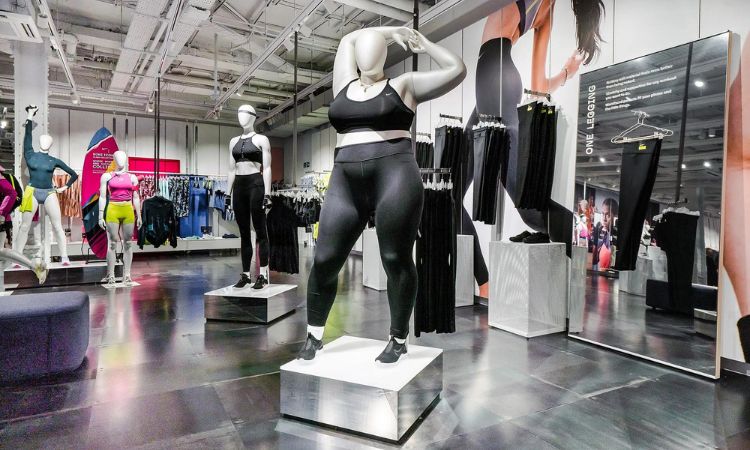Plus Size Clothing Market: Trends, Insights, and Future Forecast (2024-2032)

The global plus size clothing market size is experiencing dynamic growth, driven by changing consumer attitudes, increasing demand for inclusive fashion, and expanding retail options. In 2023, the global plus size clothing market size reached a value of approximately USD 251.77 billion. With a robust growth trajectory projected, the market is expected to expand at a compound annual growth rate (CAGR) of 5.30% between 2024 and 2032, ultimately reaching a value of USD 400.74 billion by 2032. This growth underscores a significant shift in the fashion industry, reflecting broader societal changes towards inclusivity and diversity.
Market Overview
The plus size clothing market, often defined by clothing designed to fit individuals who wear sizes above the standard size range, has evolved considerably. Historically, the market faced challenges, including limited availability and fewer options for plus size consumers. However, a growing emphasis on body positivity and the demand for stylish, well-fitting clothing in larger sizes have led to an expansion in market offerings.
Key drivers of this growth include increased awareness of body diversity, advancements in fabric technology, and an expanding range of styles catering to various body types. Additionally, major fashion brands and new entrants alike are investing in plus size collections, recognizing the lucrative opportunities within this segment.
Market Segmentation Analysis
By Type
- Casual Wear Casual wear remains a dominant segment in the plus size market, encompassing everyday apparel such as jeans, t-shirts, and sweatshirts. The rise of casualization in work environments and leisure activities has fueled demand for comfortable yet stylish options. Leading brands are focusing on inclusive sizing while maintaining fashion-forward designs, catering to diverse consumer preferences.
- Formal Wear Formal wear for plus size individuals has seen substantial growth, with increased offerings in suits, dresses, and evening wear. Innovations in tailoring and design have enhanced the fit and aesthetic appeal of formal attire, addressing the historical lack of options in this category. Key players are leveraging this trend to capture market share and cater to formal occasions.
- Sportswear The sportswear segment is rapidly expanding as more individuals seek activewear that accommodates various body types. This growth is driven by the increasing emphasis on health and fitness. Brands are now developing sportswear that combines functionality with style, offering options for both high-performance and casual workouts.
- Others Other categories within the plus size clothing market include swimwear, lingerie, and outerwear. These niche segments are gaining attention as brands broaden their offerings to ensure that all aspects of a plus size wardrobe are well-represented.
By Gender
- Male The male plus size market is growing, with increasing recognition of the need for well-fitting, stylish clothing for larger men. Trends in this segment include a focus on comfort, fit, and contemporary designs. Major brands are expanding their collections to cater specifically to male consumers, enhancing their market presence.
- Female Female plus size clothing remains the largest segment, driven by a growing demand for fashionable, well-fitting options. This segment has seen significant innovation, with brands offering a wide range of styles from casual to formal wear. The emphasis on body positivity and diverse representation continues to drive growth in this category.
By Size
- XL and 2XL Sizes XL and 2XL are the most commonly available in the plus size market. These sizes have seen steady demand, with brands focusing on providing a range of options to cater to a broad consumer base. Innovations in fit and style are prominent in these size categories.
- 3XL and 4XL The market for sizes 3XL and 4XL is also expanding, driven by increased consumer demand and improved availability. Brands are investing in these sizes to ensure that larger individuals have access to fashionable and well-fitting clothing.
- Others Emerging sizes and custom-fit options are becoming more prevalent, reflecting a growing awareness of the diverse body types within the plus size market. These developments are opening new opportunities for brands to cater to niche segments and specific consumer needs.
By Age Group
- Below 15 Years The plus size market for children and teenagers is growing, driven by a demand for stylish and age-appropriate clothing. Brands are developing collections that cater to younger consumers, addressing a previously underserved market segment.
- 16 to 30 Years This age group represents a significant portion of the plus size market, with a focus on trendy and fashion-forward options. Brands are capitalizing on this demographic’s interest in contemporary styles and inclusive sizing.
- 31 to 59 Years Consumers in this age group seek a balance of style and comfort, with a preference for versatile clothing that suits both professional and casual settings. The market is responding with a range of sophisticated and practical options.
- 60 and Above Years The plus size market for older adults is growing, reflecting an increasing desire for stylish and well-fitting clothing among older demographics. Brands are focusing on comfort, ease of wear, and timeless designs to cater to this segment.
By Price
- Premium The premium segment of the plus size market caters to consumers seeking high-quality, designer apparel. This segment is growing as more brands introduce luxury plus size collections.
- Mid-Range Mid-range pricing continues to dominate, offering a balance between quality and affordability. Brands in this segment are focusing on delivering value while maintaining style and fit.
- Budget The budget segment remains crucial, providing essential clothing options for cost-conscious consumers. This segment is competitive, with brands striving to offer both affordability and style.
By Sales Channel
- Online Retail Online retail is a major growth driver for the plus size clothing market, providing consumers with access to a wide range of options and convenience. E-commerce platforms are increasingly incorporating advanced features to enhance the shopping experience.
- Brick-and-Mortar Stores Physical retail stores continue to play a significant role, with many brands expanding their in-store offerings to include plus size collections. Stores are focusing on creating inclusive shopping experiences.
- Hybrid Models Hybrid retail models, combining online and offline shopping experiences, are becoming more prevalent. Brands are leveraging this approach to reach a broader audience and enhance customer engagement.
Regional Analysis
- North America North America remains a leading market for plus size clothing, driven by high consumer demand and a well-developed retail infrastructure. Major brands and retailers are focusing on expanding their plus size offerings in this region.
- Europe The European market is experiencing growth, with increasing emphasis on inclusivity and diverse fashion options. Brands are catering to varied consumer preferences across different European countries.
- Asia-Pacific The Asia-Pacific region presents significant growth opportunities due to a rising middle class and increasing fashion awareness. Brands are expanding their presence in this region to tap into new consumer segments.
- Latin America The Latin American market is growing, with increasing availability of plus size clothing and rising consumer demand. Brands are focusing on tailoring their offerings to regional preferences.
- Middle East & Africa The Middle East and Africa are emerging markets with growing potential. Brands are exploring opportunities in these regions, driven by increasing urbanization and changing fashion trends.
Competitive Landscape
The competitive landscape of the plus size clothing market is diverse, with numerous players ranging from established fashion giants to emerging brands. Key strategies include product innovation, expanded size ranges, and targeted marketing efforts. Recent developments and partnerships are shaping the competitive dynamics, with companies striving to enhance their market positions.
Future Forecast (2024-2032)
Looking ahead, the plus size clothing market is set for continued growth, driven by ongoing trends in inclusivity, technological advancements, and evolving consumer preferences. Emerging opportunities include advancements in sustainable fashion, personalized shopping experiences, and the expansion of niche markets. Stakeholders should remain attuned to these trends to capitalize on growth opportunities and address potential challenges.










